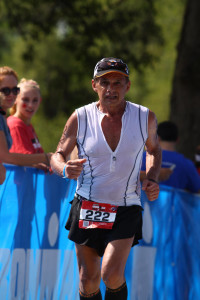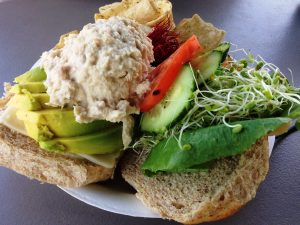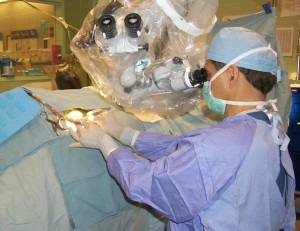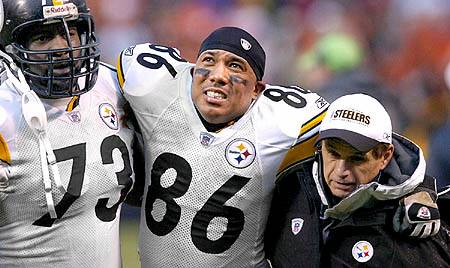Why Radical Shifts in Diets and Workout Routines Often Fail To Change Lifestyles
 As I wrote in my book, Square One, part of my journey toward achieving balance on all sides of my personal “square”—physical, spiritual, work and relationships—was to rediscover what it meant to live a healthy lifestyle. Like so many of us, I first thought about that concept in reductive, unproductive terms like “losing weight” and “working out.” But the ideas associated wellness and vitality are more positive terms.
As I wrote in my book, Square One, part of my journey toward achieving balance on all sides of my personal “square”—physical, spiritual, work and relationships—was to rediscover what it meant to live a healthy lifestyle. Like so many of us, I first thought about that concept in reductive, unproductive terms like “losing weight” and “working out.” But the ideas associated wellness and vitality are more positive terms.
But feeling vital and full of energy should not be a chore, and it needn’t be. A healthful, vital lifestyle is one that works for you. I think lifestyle changes should focus on how you can be healthy and live well, rather than on what works for the masses. Additionally, it must be something that you can enjoy.
Now, to be fair, change is difficult under any circumstances. Even changing from being sedentary to walking for one hour per day, five days a week, is an adjustment. Giving up fast food in favor of healthy meals is disruptive. But choosing healthful changes that work for you makes the adjustments easier and less disruptive. The trick is always, “Where do I start?” I’d suggest avoiding most fad diets that require radical changes to either your diet or your exercise level and focus on those that are more engaging and even pleasurable. I’ve personally seen the results of radical shift from sedentary to fierce exercise related injuries (a very common outcome) in my practice as a neurosurgeon.
I do triathlons. That works for me. That’s what I enjoy. But that won’t necessarily work for you, and it shouldn’t. There’s an old saying: “The best workout is the one that you’ll do.” If that means walking 5 miles a day for you, that’s fantastic; if you’re moving, that’s great. As you become more fit, you can move onto other types of exercise if you want to. But all that matters at the outset is that you make a change that’s pleasurable for you. In my book, I listed many ways to add movement to your daily routine:
– Walk, don’t drive, for short distance errands 
– Take the stairs
– Walk on breaks at work
– Dance
– Garden
– Clean your house
But there’s one other thing you can do right now that will make a huge difference in your wellness, and that’s to stop watching any exercise commercial or online video that suggests that exercise alone can get you lean and shredded. Because it’s simply not true. The average 165-pound man will burn around 1,700-1,800 calories every day just sitting on the couch. Adding a workout routine is great, and the more you move the better, but the impact is really relatively small. Let’s say you do 60 minutes on the elliptical machine at the gym. A person weighing 165 pounds should burn 600-700 calories during that workout.
Not bad. That’s worth doing for a variety of reasons from cardiovascular health to preventing mood disorders. Do that workout 4 days a week and you’re burning a lot of calories and feeling great. But if you’re eating poorly, you can undo all that progress in two meals at the Cheesecake Factory. My point is, if your goal is to get leaner, feel better, and be healthier, you’re better off focusing your attention on eating better food and treating your workouts as supplemental to a great diet, because if you’re alive, you’ll burn calories.
Fitness experts will say that health and weight control are 70-80% about your diet. Dietary changes should be something you can continue the rest of your life. Eat unprocessed, real, whole food as possible—fruit, vegetables, nuts, seeds, legumes and lean protein, mostly, with lots of healthy fats, herbs and spices added to make things taste incredible.
There are three reasons this approach works better than most diet plans, and certainly better than a lifetime of meal replacement shakes:
1. It fills you up. When you eat mostly plant-based foods and protein, you’re eating a lot of fiber, which helps you feel full. Protein does the same thing, while boosting your metabolic rate so you burn more calories at rest.
2. It’s incredibly satisfying. It might take you a few meals to shift your taste buds away from chicken nuggets and donuts to blueberries and basil, but when you do make that jump, you’ll find that real food tastes incredible.
3. It makes you feel like a million bucks. You’ll have some withdrawal symptoms when you cut out the excess sugar, fat and salt from bad food, but after you get past that, eating real food full of macro- and micro-nutrients, antioxidants and unsaturated fatty acids will make you feel better than you have in years. You might also sleep better, think more clearly and find symptoms like acid reflux gone.
In other words, eating great, whole food is pleasurable. It tastes good and feels good. It’s pleasurable to prepare, especially if you’re doing it at home with family or friends and get to savor the smells. I advise in my book, make the core of your daily diet 20-30 great foods that you can mix and match and augment with spices and herbs until they’re incredible. Some suggestions:
– Greek yogurt
– blueberries, strawberries, raspberries
– lean chicken and turkey
– seafood
– nuts
– brown rice, quinoa, and whole wheat pasta
– sweet potatoes
– broccoli and cauliflower
– green tea
– oatmeal
– herbs, spices, and garlic
– spinach and arugula
– avocados
– beans and lentils (if you get canned, watch for sodium)
– olive oil
– eggs
– apples, pears, peaches and cherries
– tomatoes, radishes, carrots and onions
– mushrooms
– tofu, tempeh and seitan
That’s a good starter list, but be sure to add other foods—ethnic foods, other produce, vinegars and dressings—that turn you on. Then start building 90% of your daily diet from those foods. Leave room for a few treats and cheats, but not many. If you make this switch, you will not only find yourself feeling more satisfied, snacking less and probably losing weight, but you’ll also have more energy for exercise. Then you’re really on your way.
Joseph C. Maroon, MD, FACS is clinical professor and vice chairman of the Department of Neurological Surgery and Heindl Scholar in Neuroscience at the University of Pittsburgh Medical Center. He is also the team neurosurgeon for the Pittsburgh Steelers, co-creator of the ImPACT concussion screening test, a sports medicine, health, and nutrition expert, an Ironman triathlete, and the author of Square One: A Simple Guide to a Balanced Life. For more information or to order the book, visit www.maroonsquareone.com.




 Dr. Maroon received an athletic scholarship to Indiana University in Bloomington, Indiana where as an undergraduate, he was named a Scholastic All-American in football. Dr. Maroon has successfully maintained his personal athletic interests through participation in 9 marathons and more than 72 Olympic-distance triathlon events. However, his greatest athletic accomplishment is his participation in 8 Ironman triathlons (Hawaii – 1993, 2003, 2008, 2010, 2013; Canada – 1995; New Zealand – 1997; Germany – 2000), where he usually finishes in the top 10 of his age group. Recently, in July 2012 and 2013, he finished second and third, respectively, in his age group in the Muncie, Indiana half Ironman triathlon. In October 2013 he completed his 5th World Championship Ironman in Kona, Hawaii.
Dr. Maroon received an athletic scholarship to Indiana University in Bloomington, Indiana where as an undergraduate, he was named a Scholastic All-American in football. Dr. Maroon has successfully maintained his personal athletic interests through participation in 9 marathons and more than 72 Olympic-distance triathlon events. However, his greatest athletic accomplishment is his participation in 8 Ironman triathlons (Hawaii – 1993, 2003, 2008, 2010, 2013; Canada – 1995; New Zealand – 1997; Germany – 2000), where he usually finishes in the top 10 of his age group. Recently, in July 2012 and 2013, he finished second and third, respectively, in his age group in the Muncie, Indiana half Ironman triathlon. In October 2013 he completed his 5th World Championship Ironman in Kona, Hawaii.